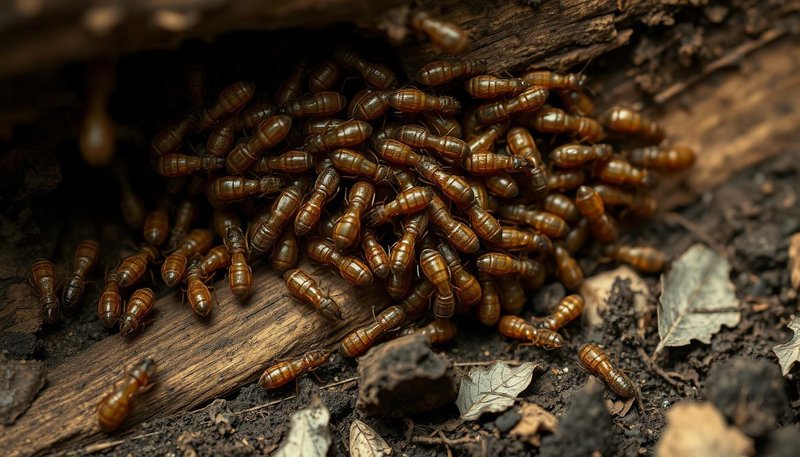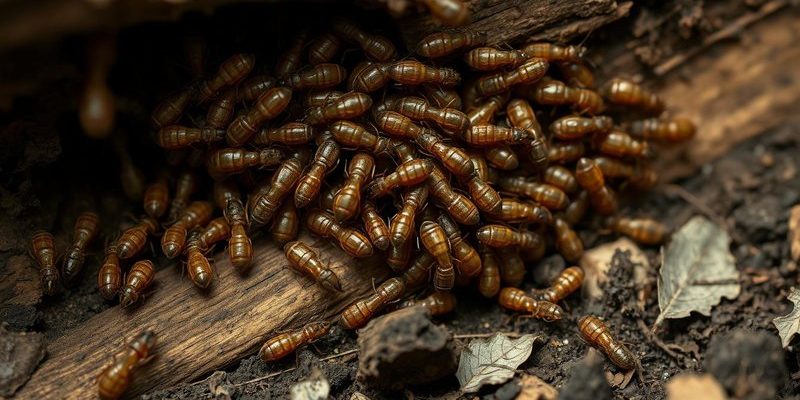
Honestly, the short answer is that termites aren’t directly dangerous to humans in the way that, say, a venomous snake might be. They don’t bite or sting, and they don’t carry diseases that can harm you or your pet. However, they do pose serious risks when it comes to your home and wallet. So, let’s take a closer look at the world of termites, what they do, and why it matters.
What Are Termites?
Termites are small insects that belong to the order Blattodea, which they share with cockroaches. They are often called “subterranean termites” or “drywood termites” depending on where they live and how they eat. Subterranean termites live underground and create elaborate tunnels, whereas drywood termites can live in the wood they consume.
You might be surprised to learn that there are about 2,600 species of termites worldwide, and they play a crucial role in the ecosystem. By breaking down dead plants and trees, they help recycle nutrients back into the soil. So, in their own way, they’re like nature’s little recyclers! Still, it’s hard to reconcile that with visions of them munching away at your home’s structure.
How Do Termites Affect Humans?
While termites don’t pose a direct threat to human health, their impact can be quite significant when it comes to property damage. They can silently eat away at wood, insulation, and even paper products in your home for years without you even knowing. Imagine finding out your beautiful wooden deck is a hollow shell because of these little pests!
The real danger lies in the costs associated with termite damage. Homeowners can face hefty repair bills that can reach thousands of dollars. It’s not just about the physical damage, either; termite infestations can reduce your home’s value and make it harder to sell. In fact, many real estate agents recommend getting a termite inspection before selling or buying a home to avoid nasty surprises.
Signs of a Termite Infestation
So, how can you tell if you have termites? Catching them early is the key to minimizing damage. Here are some signs to watch for:
- Wood Damage: If you notice hollow-sounding wood or small, visible tunnels in wooden structures, that’s a red flag.
- Frass: Termite droppings, known as frass, look like tiny wood pellets. Finding this near wooden areas can indicate an infestation.
- Swarmers: In spring, you might see winged termites (swarmers) looking for new places to establish colonies. If you spot them inside your home, that’s a sure sign of an issue.
Regular home inspections and staying vigilant can help you catch termites before they cause too much trouble. It’s kind of like going for your regular check-up; it’s better to prevent problems than deal with them later.
Are Termites Dangerous to Pets?
You might be wondering if termites can affect your furry friends. The good news is that termites are generally not dangerous to pets, either. They don’t bite, and their waste products don’t typically affect animals in the way that some pests do. However, if a pet were to chew on wood infected with termites, it could potentially lead to splinters or other injuries.
As with humans, the indirect dangers come from potential structural damage. If a pet can get into parts of the house that are compromised, they could be at risk of injury from a collapse or weakened structure. Keeping an eye on your home and ensuring it’s in good shape can help keep your pets safe, too.
How to Prevent Termites
Prevention is often the best strategy when it comes to termites. Here are some effective measures to keep these little munchers at bay:
- Reduce Moisture: Termites thrive in moist environments, so fix leaks and maintain gutters to keep areas dry.
- Store Firewood Properly: Keep firewood at least 20 feet away from your home and store it off the ground to discourage termite access.
- Seal Cracks: Inspect your home for cracks in walls, foundations, and entry points. Sealing these areas can help prevent termites from getting inside.
Taking these steps may feel like extra work, but they’re worth it in the long run. Think of it as regular maintenance for your home’s health.
How to Deal with a Termite Infestation
If you suspect you have a termite problem, act quickly. Here’s a simple roadmap to tackle the situation:
1. Identify the Problem: Look for the signs mentioned earlier. If you spot anything suspicious, it’s time to take action.
2. Call a Professional: While DIY methods can work, the best approach is usually to call a pest control expert. They have the tools and knowledge to tackle infestations effectively.
3. Consider Treatment Options: There are various treatment options available, including chemical treatments and baiting systems. A professional can recommend the best course of action for your situation.
4. Follow-up Inspections: Once treatment is done, schedule follow-up inspections to ensure the termites are gone for good.
Getting the right help can make all the difference, just like visiting a doctor for a persistent cough. It’s always better to be safe than sorry!
So, is the termite dangerous to humans? The answer is a mixed bag. They don’t pose a direct health risk, but they can create significant concerns regarding property damage and financial strain. By staying vigilant, recognizing the signs of an infestation, and taking preventive measures, you can protect your home and keep those sneaky little pests at bay. After all, a little prevention today can save you a lot of trouble tomorrow!
Take care of your home, and you’ll have peace of mind knowing that you’ve done your best to ensure it’s a safe haven for you and your loved ones.

